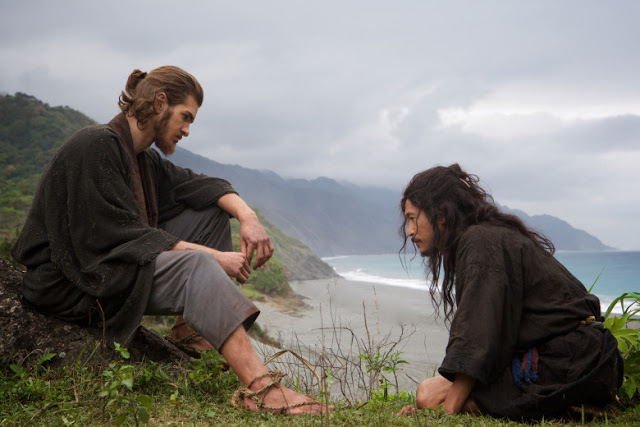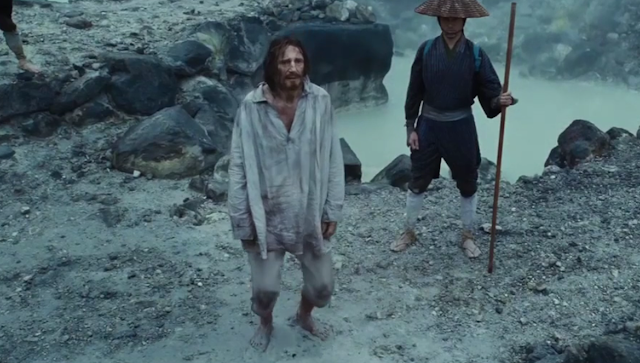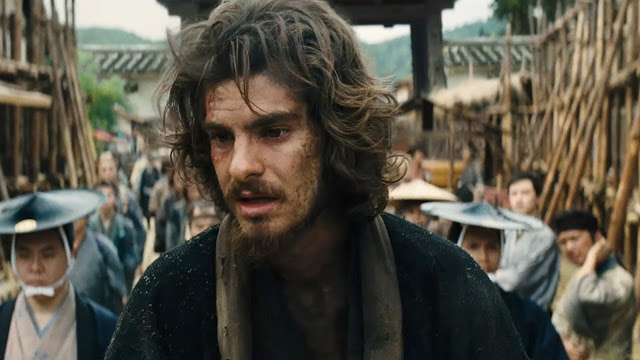There are passion projects, and then there’s Silence, an enormous undertaking that the 74-year-old Martin Scorsese has been trying to make for more than a third of his life. Instantly announcing itself as a Very Important Film—it opens on a black screen to the chirping of crickets and croaking of frogs before the noise suddenly cuts out, rendering the title card eponymous—it is markedly different from the director’s most popular works. There are no avaricious gangsters, no amoral sinners, no Rolling Stones songs, no De Niros or DiCaprios. Independently, this stylistic departure is by no means problematic; filmmakers should hardly be expected to pigeonhole themselves within particular genres or methods. But Silence’s dissimilarities to the rest of Scorsese’s oeuvre go beyond topic or setting—other features that typically attend one of his productions are also absent. There is, for example, no joy, no humor, no entertainment, no energy. When viewed from a long distance, Silence reasonably resembles a hugely ambitious, sporadically staggering work of art. Only when you get up close and try to engage with it do you realize it’s the worst movie Scorsese has made in several decades.
Of course, that doesn’t mean all that much—even Scorsese’s relatively minor works (Hugo, Bringing Out the Dead) tend to thrum with vigor and excitement. But Silence, which chronicles the persecution of Christians in seventeenth-century Japan, is different. Scorsese has long grappled with the weighty themes and thorny contradictions of Catholicism, most notably in The Last Temptation of Christ, his gripping telling of the Crucifixion that concluded with an operatic and highly controversial detour. Yet where Last Temptation was robustly entertaining as well as intellectually fascinating, Silence betrays no interest in narrative momentum. The result is a cruel irony: Here is a film that was unquestionably a monumental labor to create, yet it exhibits no discernible effort to actually connect with its audience. It’s a violation of the very selflessness that Silence preaches; Scorsese has made this movie for nobody but himself.
Based on a novel by Shûsaku Endô (Scorsese co-wrote the screenplay with Jay Cocks), Silence begins in 1633, with Father Ferreira (Liam Neeson) looking on in horror as several of his Jesuit colleagues are tortured to death. As he informs us via voiceover, when Japanese officials demanded that these brave men apostatize, they instead asked to be tormented, believing that it would illustrate the depths of their devotion. For the remainder of its considerable runtime (the film clocks in at 161 minutes and feels twice as long), Silence endeavors to wrestle with this philosophical conundrum: How do you bring salvation to a culture that responds only with hatred, violence, and terrorism?
The ethnocentric assumptions buried within that question are troubling, but never mind. They certainly don’t trouble Ferreira’s protégés, a pair of Portuguese priests named Rodrigues (Andrew Garfield, toiling valiantly) and Garupe (Adam Driver, dreadfully miscast). After hearing rumors that Ferreira has renounced the Church and is now living as a Japanese atheist, these two dutiful disciples resolve to locate him. (For their guide, they acquire the services of Kichijiro (Yôsuke Kubozuka), a drunken fisherman with his own shady past.) Upon arriving in Japan, they are immediately driven into hiding, lest they fall victim to the country’s unyielding campaign against Christians. They remain in hiding for a while. A long while.
The first hour of Silence is interminable. To describe Rodrigues and Garupe’s activities—they administer a few sacraments here and there but mostly sit solemnly inside a hut—risks ascribing action to a film that is stubbornly, emphatically staid. The theory, I suppose, is that the movie’s sluggish pacing places you within the anguished headspace of its characters—that only by straining your endurance can Scorsese communicate his heroes’ existential woe. In actuality, the opposite occurs, as the oppressive torpor keeps you detached and precludes any possibility of engagement. Watching Rodrigues and Garupe huddle in squalor, whimpering about their fate, I was less inclined to contemplate their agony than to check my watch.
To be clear, my quarrel with Silence is not its length; Scorsese’s last movie, The Wolf of Wall Street, ran three hours and was an absolute romp. Nor do I object to its strenuous seriousness. The problem lies in Scorsese’s inability to convey his characters’ predicament with any urgency or clarity. Rodrigues’ periodic voiceovers, in which he muses about his relationship with God, only underscore the film’s fundamental inexpressiveness. Scorsese is forced to tell you what Rodrigues is thinking and feeling because he is unable to show you.
He does show you some other cool stuff. Silence is an impressive-looking film, with a commendably rich sense of visual detail and a strikingly somber color palette. The cinematography, by Wolf lenser Rodrigo Prieto, seems to leech the light out of the Land of the Rising Sun, revealing a forbidding realm of scummy water, fetid grass, and suffocating smoke. (Filming took place in Taiwan.) And the occasional scenes of torture are appropriately horrific, depicting a level of barbarism that is both morally repulsive and pragmatically inventive.
The chief orchestrator of these atrocities is Inoue (Issei Ogata, strong), a samurai-cum-governor who rules his islands with a sharp sword and an eerily distinctive voice. Where Rodrigues sees himself as a vessel of holy deliverance, charitably dispensing God’s love to those who seek it, Inoue views him as prideful and misguided. “The price for your glory is their suffering,” he tells Rodrigues, and while Silence portrays Inoue as a simpering villain, it’s hard to argue his point; the more Rodrigues preaches the gospel, the more Japanese people die. The film’s ostensible dramatic conflict stems from Rodrigues’ stomach-churning struggle with his faith, and whether his persistent refusal to apostatize is noble or selfish.
His dilemma is certainly unpleasant, but Rodrigues’ crisis of belief never turns into the agonizing crucible that Scorsese so desperately wants it to become. And even as Silence develops a sliver of plot—Rodrigues finds himself verbally sparring with Inoue, as well as with another character whose arrival is inevitable—it fails to transcend its theoretical underpinnings. The movie’s second half, while less tedious than its first, is little more than a talky, didactic seminar about religion and its myriad complexities. (Speaking of talking, the three lead white actors provide a mishmash of accents, even though their characters are all putatively Portuguese.) Catholic concepts have threaded their way through Scorsese’s pictures since the ’70s, but where Silence aims to stand as the apotheosis of his reckoning, it instead feels like a terribly earnest term paper.
Perhaps I’m being unfair. After all, whatever the result, Scorsese’s passion for this material is undeniable. But that’s the issue—he pulls his direction so intently inward that the effect is stifling and even punishing. And so, we’re left peering through the fog, helplessly trying to ascertain the motivations of a filmmaker who demonstrates no concern with what we think or how we feel. Silence is undoubtedly the movie Scorsese wanted to make. The price for his solipsism is our suffering.
Jeremy Beck is the editor-in-chief of MovieManifesto. He watches more movies and television than he probably should.




Thanks for saving me the time and hassle of seeing Silence. I wasn't particularly interested and your review confirmed it. But, I take issue with your last sentence in that I do not believe "solipsism" is the appropriate term. Please rewrite.
Also, I can't find your Transformers: Age of Extinction review. Can you link it?